Avian Flu in Cats and Dogs: FAQs
By now, we’ve all heard news reports about the spread of avian influenza, otherwise known as the “bird flu,” in the U.S. The strain that is currently circulating is called H5N1, and it is considered highly contagious. While this virus primarily affects wild bird populations, or domestic poultry like chickens and turkeys, there have been rare documented cases of spread to mammals, including humans and cats.
Is my cat or dog at risk for getting avian flu?
The good news is that the overall risk for contracting the avian flu is extremely rare in cats, and even rarer in dogs. The primary risk factors are eating raw, freeze-dried, or undercooked foods (including raw or unpasteurized milk), and eating or coming into contact with infected birds or livestock. Fortunately, these risk factors are largely controllable: Do not feed your pet raw food or milk; keep your cat indoors; keep your dog leashed and away from areas where they might be exposed to infected wildlife; and clean your dog’s paws if they may have been exposed to infected birds or bird droppings. Remember, even in Brooklyn we live among many species of wild birds, one of the leading natural prey for outdoor felines, so letting your cat roam outdoors (even in a backyard) is highly discouraged. If you yourself come into contact with potentially infected birds or wildlife, be sure to wash your hands thoroughly (and to clean and disinfect bird feeders regularly).
What symptoms should I look out for?
Possible symptoms of avian flu include lethargy; fever; loss of appetite; respiratory signs such as congestion, sneezing, nasal discharge, or difficulty breathing; redness or discharge from the eyes; or neurologic signs such as uncoordinated movement, tremors, seizures, wobbly gait, or behavior changes. These symptoms are common to many other conditions from allergies to stomach bugs. So, the primary reason your vet might suspect possible avian flu would be if you feed your pet raw or freeze-dried food or raw milk, or if your pet has been outdoors where they may have come into contact with infected wildlife or livestock.
What do I do if I suspect my pet has avian flu?
If you suspect your cat may have contracted the avian flu, contact your veterinarian for an exam as soon as possible. Be sure to let them know that you suspect avian flu before heading to the clinic, so they will be able to take precautions to minimize any exposure or transmission to other pets or humans. (These protocols include immediately taking you and your pet into a designated exam room, wearing protective gear such as gloves and gowns, and thorough disinfection after the appointment is completed.) If your veterinarian does suspect your pet has contracted avian flu, they will likely send out a blood sample for testing, which screens for the specific H5N1 virus, to confirm the diagnosis.
Unfortunately, the avian flu can cause severe and life-threatening illness in cats (it’s exceedingly rare in dogs and severity of illness is less documented). While there is no specific treatment or vaccine for avian flu, your vet can provide supportive care to relieve symptoms. In severe cases, treatment may require hospitalization and intensive care. So, the best way to protect your pet is to minimize their risk by avoiding raw foods or unpasteurized milk, and keeping your cats indoors and your dogs leashed.
Pet Supplements: What You Should Know
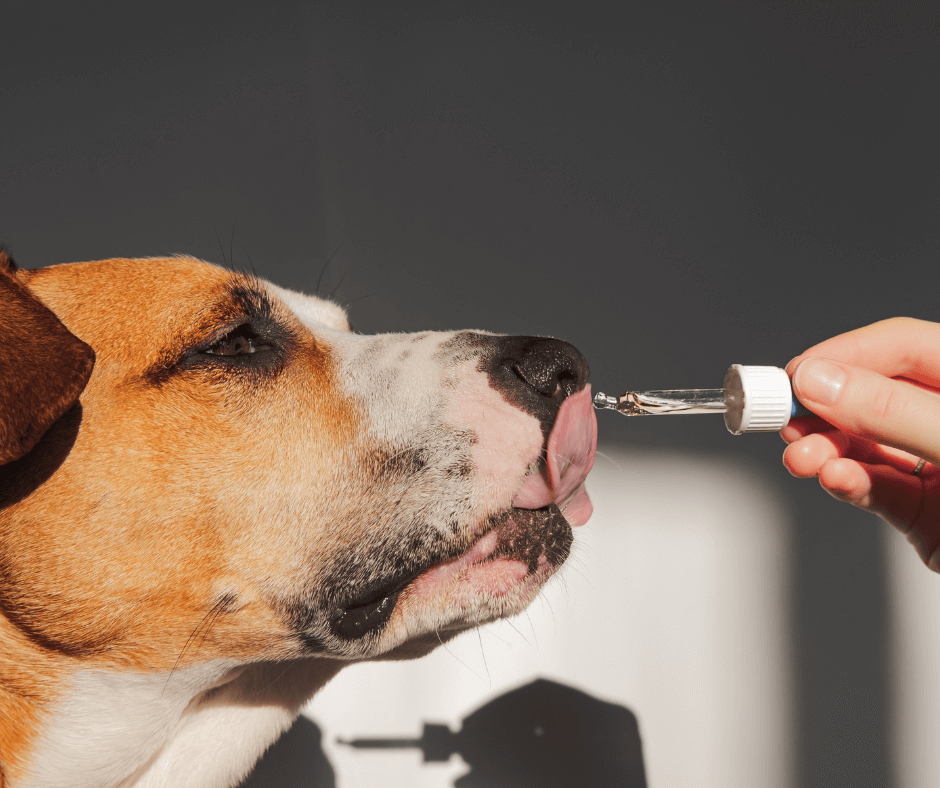
With the recent legalization of recreational marijuana in New York state, virtually every bodega is now selling CBD products — even for our pets, right next to the kibble and the cat litter! If you feel a natural wariness about the corner store CBD’s efficacy, you wouldn’t be wrong. CBD products — and veterinary supplements in general — exist in that gray area of medicine, where they should not be used without a doctor’s recommendation, but can still be purchased over the counter without a prescription. Because of this, and the lack of FDA regulation over pet supplements, there are virtually no guidelines or standards that manufacturers need to abide by in order to market or sell products labeled as pet supplements. So, how do pet owners ensure that products are safe, and that they’re getting their money’s worth?
What Makes a High-Quality Supplement?
First of all, for a veterinary supplement to be effective, the product must contain the scientifically recommended dosage of its particular active compound. Because there is so little oversight, many popular brands contain too small a dose to have any noticeable health benefits.
Secondly, the most reputable and reliable manufacturers are certified members of the National Animal Supplement Council, a voluntary organization that performs third-party, unbiased audits and efficacy testing. (NASC was formed in 2001 to act as a regulatory body for the animal supplement industry.) Even if you don’t see an NASC-certified seal on the packaging, you can check to see if a supplement is on the list of certified manufacturers here.
Despite the best efforts of NASC to regulate the animal supplement industry, manufacturers are not required to join, nor to have their products tested at all. The result is that countless brands are being sold in pet stores with potentially dangerous ingredients, or which contain the proper ingredients in insignificant doses that are ultimately ineffective. Purchasing supplements online further complicates this problem: A few years ago, we had a client report that Google’s search algorithm suggested cow tranquilizers when she was hunting for an anti-anxiety supplement for her dog! Not to mention the numerous reports of counterfeit or expired supplements being offered by third-party sellers on sites like Amazon.
Our Recommendations
Below is a list of commonly used pet supplements, including the specific brands that we recommend to our clients. Each of these products contains the scientifically recommended dosage of its particular active ingredient, and most are also certified by the National Animal Supplement Council.
Probiotics: Used for maintaining gastrointestinal health. We recommend FortiFlora, Visbiome Vet, and Entero Flora Pro Powder.
CBD: Used for anxiety and pain reduction. We recommend ElleVet.
Omega-369/Fish oil: Used for skin and joint health. We recommend Welactin and Nordic Naturals.
B12: Used for immune and intestinal health. We recommend Cobalequin as an oral supplement when injections are not an option.
Glucosamine: Used for joint health. We recommend Dasuquin, Cosequin, and Glycoflex.
Denamarin: Used for liver health. We recommend Nutramax Denamarin.
Check in with Your Vet
Although veterinary supplements are easily obtainable and do not require a prescription for purchase, that doesn’t necessarily mean you should run out and put your pet on glucosamine or CBD after reading this article. Supplements are still medications, and should not be used without your veterinarian’s guidance. So, if you’re ever curious about putting your pet on a supplement, please give us a call — we’ll be happy to set up a consultation or have you speak with someone from our medical staff.
Using Sedation for Your Pet’s Medical Exam: What to Know
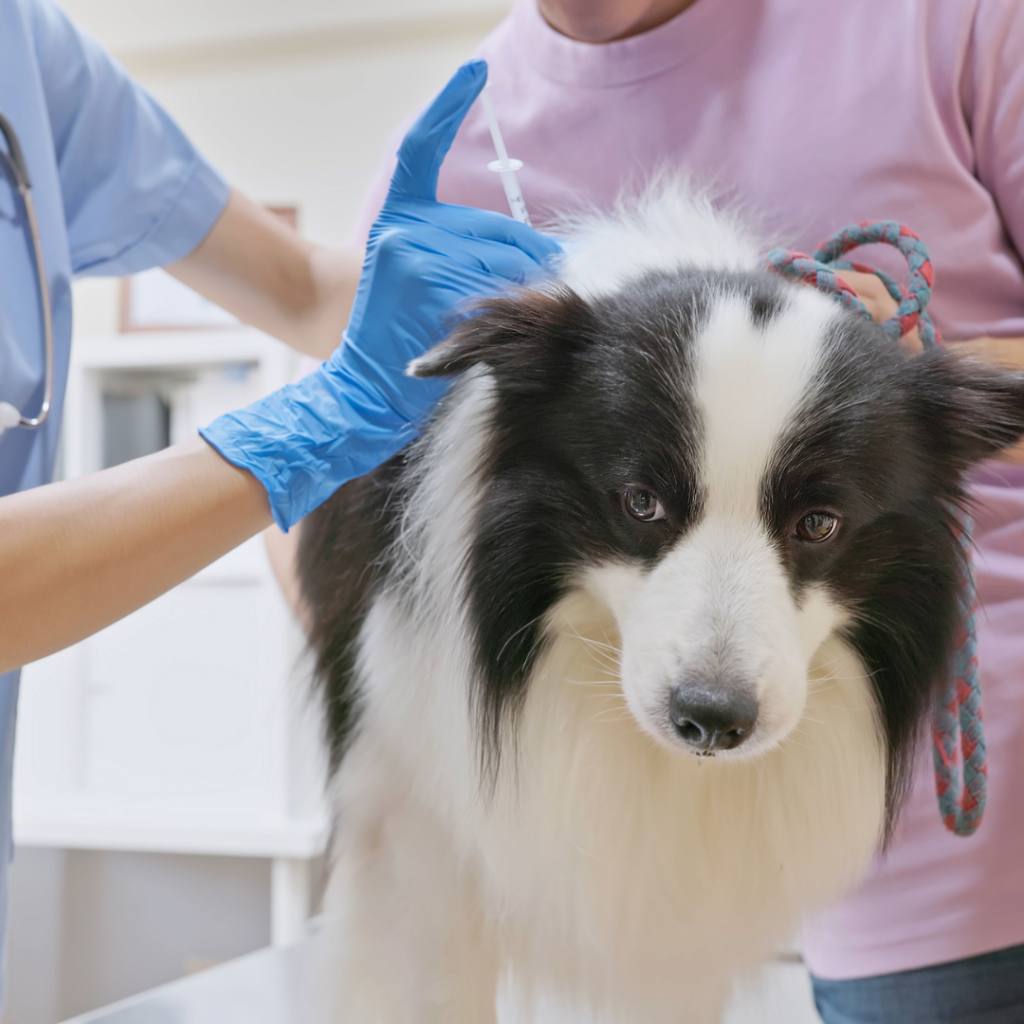
In our previous blog, we discussed ways to minimize your pet’s stress level at the vet — rest assured, we understand that a doctor’s appointment isn’t always a fun experience for your canine or feline companion, and want to make it as easy as possible! But despite our best efforts, some pets still show signs of excessive stress or fear during their exams. In these cases, our doctors will often recommend oral or injectable sedation to make the experience smoother for all involved. So, what does “sedation” mean exactly, and are there any downsides?
Sedation: A Safe and Routine Practice
When discussing the option of a sedated exam with our clients, by far the most common question we get is, “Is it safe?” Sedating anxious pets is generally very safe, and in many cases, necessary for the doctor to complete a thorough exam. Our doctors will consider your pet’s breed, size, health, and age to determine if and what type of medication is appropriate.
We can’t emphasize enough just how common a procedure sedation is at all vet hospitals. Many of our employees’ pets actually require sedation for vet visits — our office dog, Rocky, loves to hang out up front, nap in his chair, and greet clients, but when it’s time for an exam, he’s too scared to recognize his best friends in the treatment area!
And remember, sedating your pet doesn’t reflect negatively on you as a pet owner. Even when owners and staff take great pains, some pets just go into fight or flight mode at the vet, and that’s ok! At All Creatures, we strive to make patients and clients alike comfortable — and sometimes a sedated exam is the best way to achieve this. When your pet’s alertness is dulled, they’ll barely notice a thing at their visit, allowing it to go off without a hitch.
Oral vs. Injectable Medications
Methods of sedation are individually tailored by our doctors on a case-by-case basis, after a full evaluation of each pet’s medical and behavioral history. Based on their review, the doctor will recommend oral medication, injectable sedation, or both.
Injectable sedation is not the same as “being put under,” which generally refers to the inhalation anesthesia with IV and gas used for surgery or dental procedures. Surgical anesthesia is just that — reserved for procedures that take longer or may be more painful than a physical exam or blood draw. Sedated medical exams, even those including x-rays or minor procedures like nail trims, often take 30-45 minutes. The injectable medications used for these appointments are very safe: the mortality rate is on average less than one tenth of one percent, even when factoring in pre-existing health conditions.
And keep in mind, just because your pet needs injectable sedation once doesn’t mean they’ll need it every time. We often send pets home with oral medications to be given prior to their future vet visits, which, if successful, is a preferred option. The two medications we most commonly prescribe are gabapentin and trazodone. (Some of you reading this likely have one or both in your pet’s medicine cabinet!)
Gabapentin has a very wide margin of safety and is also regularly used for pain relief. It works by affecting the GABA receptors in the brain. (To quote the Cleveland Clinic, “GABA is known for producing a calming effect. It’s thought to play a major role in controlling nerve cell hyperactivity associated with anxiety, stress and fear.”) The main side effect is sleepiness — but, that’s good! We want your pet to feel sleepy and relaxed, rather than stressed out and fearful. Gabapentin is used in pets of all ages, from kittens who freak out on car rides to older dogs with arthritis. The second most commonly used oral sedative to help with vet visits is trazodone. Trazodone is categorized as a situational anxiety medication, meaning that it’s most often given before stressful events, as opposed to daily.
After the Appointment
When clients get home after their pet’s sedated exam, they’ll often wonder, “Why is my pet drowsy? Is this normal, or should I be worried?” The short answers are: Yes, it IS normal, and no, you do not need to worry. Drowsiness is the best indicator that the sedating meds have worked, and that’s precisely what allowed a successful and simple vet visit! Any sedating medications we prescribe/administer are temporary as well — if your pet comes in for an early morning visit, chances are they’ll be back to full energy by the afternoon, evening, or the next morning at the latest.
If your pet requires oral meds for appointments, it’s always best to make sure you have the medicine prior. (In most cases, these medications should be given 90-120 minutes before your pet’s visit for maximum effect.) Please reach out to us if you are running low and need refills, we’re always happy to assist! Our staff is dedicated to making sure that your pet is as relaxed and comfortable as possible, and planning ahead can make all the difference for your furry friend’s vet experience.
Curbing your Pet’s Stress at the Vet’s Office
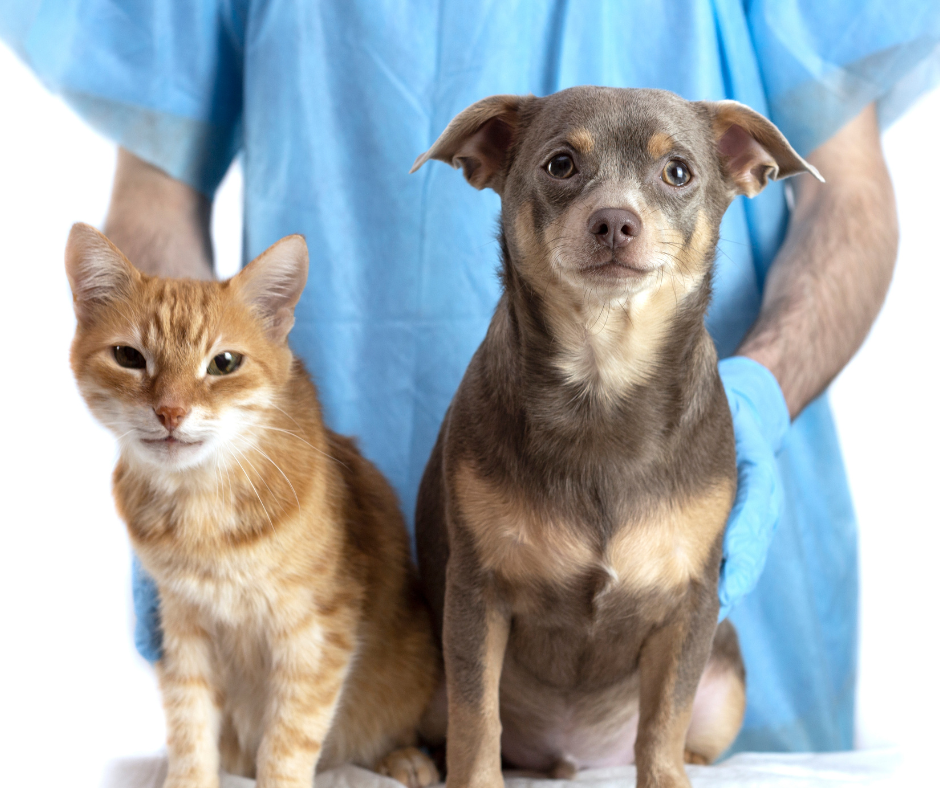
At All Creatures, our goal is not only to provide excellent health care for your pets, but also to make your visit a positive, pleasant experience. We love it when our patients have a good time with us! It’s the best part of our job — there’s really nothing like a dog who comes bounding through the door like it’s their favorite place in the world, or a cat who rolls over on the exam table for some belly rubs… and then turns the good ol’ purr machine up to 11!
But despite our best intentions, a visit to the vet can unfortunately be a stressful and overwhelming experience for some dogs and cats. In fact, veterinary anxiety is quite common. The clinic can be a very unfamiliar environment with foreign smells, sounds, and people who, by necessity, need to approach and touch them. (And may even inspect their ears, check their teeth — not to mention the dreaded needles! No wonder some pets don’t even want to step through the door.)
Signs of Stress at the Clinic
We know our pets, so for most of us it’s quite obvious when they are feeling uneasy or fearful. In dogs, signs of anxiety might include subtle behaviors like yawning, licking, and averting their gaze, or more obvious ones like panting, drooling, trembling, tail tucking, and hiding. Some dogs may manifest fear-based aggressive behaviors like growling, snapping, or lunging. In cats, common signs of stress and agitation can include vocalizing (hard to miss!), flattened ears, crouching, raised hair, and a slowly swishing tail. Fear-related pooping or peeing can also occur in both cats and dogs.
Our staff are knowledgeable about pet behavior, and trained to handle patients with skill, compassion, and respect. We do our best to alleviate your pet’s stress — at the ready with treats, scratches, toys, and calming words. And you are instrumental to this process by remaining calm yourself — pets know their owners too, and are very good at picking up on your tension. Bring favorite treats or toys with you, but don’t worry if your pet does not respond as they normally would to these incentives — scolding them might reinforce any negative feelings.
By far, though, the best practical strategy to reduce veterinary fear in our pets is to get them familiar with coming into the clinic — and the routines involved, like getting into their carrier (or a car) — before the appointment even occurs. Working with your pet to desensitize them and make them comfortable with these routines can be the key factor in making vets exams a comfortable, stress-free experience.
Practicing and Preparing Your Pup
For many dogs, reducing veterinary anxiety just takes a little time — and plenty of delicious, high-value treats! Walking your dog by the clinic regularly, just to say hello, can work wonders. We have treats at the front desk, or you can bring some of your pup’s favorites with you. These friendly visits provide a gradual exposure to the clinic environment, and create a positive association, so that coming in for a doctor’s exam is no longer something to fear. (And you can always call ahead, to make sure the office isn’t too hectic that day, so we can provide a peaceful and pleasant atmosphere.)
At home, try to get your dog accustomed to being “examined” by gently touching and looking into their ears and mouth, holding and inspecting their paws — with plenty of praise, treats, or toys as a reward. (You can even invite trusted family and friends over to perform an “exam.”) This helps dogs build up a tolerance to this type of handling. (It’s easier to establish this kind of comfort zone if you start when they are puppies, but even older dogs can benefit from gradual exposure.)
Getting Your Cat Comfortable in the Carrier
With our feline friends, the most challenging factor is often getting them into their carriers — the struggle is real! If the only time the carrier comes out is right before a vet visit (or some other disruption to their comfortable daily routine), it’s no surprise that many cats develop negative associations. And so, the moment they see the carrier, they will hide — or fight tooth and claw — to keep out.
Instead of tucking your cat carrier away in a closet, keep it out in the open, with the door propped open (at least for a period of time, or intermittently). Make it feel safe and appealing by placing a cozy towel or blanket inside, as well as a regular supply of treats and toys. Once your cat seems comfortable in the carrier, try closing the door and carrying them around the apartment or down the hallway, or even for a short car trip. Covering the carrier with a towel or blanket helps them to feel safe and secure, especially in an environment like a vet office, where they will be around unfamiliar cats, dogs, and people. (Starting when they are young can make this process easier and more effective, but even older cats can benefit from these techniques to help them grow less fearful over time.)
Supplements and Medications
In addition, there are a variety of supplements available to help alleviate veterinary (and other types of) anxiety. Calming, pheromone-based supplements like ADAPTIL and FELIWAY — administered in products like sprays, diffusers, or collars — can be helpful in some cases. Another option is CBD: We recently introduced ElleVet CBD products to our in-house pharmacy, based on the strong body of clinical studies supporting their effectiveness for conditions from anxiety to joint pain.
Fortunately, for more severe cases, there are also safe and effective pharmaceutical options available. If your pet becomes extremely anxious when coming to the clinic, we advise you to speak with one of our doctors about the possibility of trying a prescription medication before the visit. (We do offer phone consultations to facilitate this process.) These medications can be administered before, or in some cases during, an appointment.
And remember, you can always let us know beforehand if your pet has any particular triggers (such as a preference for men or women in particular, fear/aggression with other animals, etc.). This information can be very helpful for us to prepare and make your pet’s visit as relaxed and stress-free as possible.
Keeping Your Pet Cool When Temperatures Spike

By now, we’ve all heard about the extreme danger of leaving your pet inside a parked car on a warm day — even just for a few minutes with the windows cracked. But less well known is the danger that hot weather — even just temperatures in the 70s and 80s — can pose to our furry friends during everyday outdoor activities, or even at home. And this risk is even greater in areas with high humidity, as is often the case in NYC.
Dogs and cats have only a limited ability to cool themselves since, unlike humans, they cannot automatically regulate their body temperature through sweating. Instead, they release heat by panting and, to a limited degree, through their paw pads. This leaves our furry friends particularly susceptible to the effects of heat stress. And some pets — older or very young animals; breeds with shortened muzzles like bulldogs, pugs, and persian cats; and those with thicker, darker fur — are even more vulnerable to the heat than others.
Here are a few key steps you can take to protect your pet during hot weather, and prevent any heat-related health issues.
Keep It Cool and Stay in the Shade
When temperatures start skyrocketing, it’s time to scale back your pet’s typical activities or change your habits to avoid the soaring midday heat. Instead, try to walk your dog (or cat) during the cooler hours in the early morning and the evening. (This also goes for letting pets outside in the yard — if you are lucky enough to have one in the city! — but never leave them outdoors unsupervised in the heat.) If you do need to relieve your dog during midday, make it a quick bathroom break and keep to the shade.
For long-haired pets, keeping fur trimmed can help, but shaving your pet is never a good idea — in fact, their coat helps to insulate them from the heat as well as the cold, and protects against sunburn. (Keeping the fur clean, combed, and mat-free encourages this process.) Instead, there are a variety of products that can help pets stay cool and comfortable, such as cooling vests or collars — though these must be regularly re-soaked and kept wet in order to be effective — and gel-filled cooling pads that are pressure-activated when your pet lies down on them. A cool, wet washcloth, a romp through a sprinkler (or dip in a kiddie pool), or a cool bath after getting home can also help keep your pet’s body temperature in a healthy range.
Prevent Dehydration
Staying hydrated is essential for your pet’s health year round, but particularly in hot weather, when dehydration increases the risk of overheating. So, it’s important for pets to have easy access to plenty of fresh drinking water. Keep multiple water bowls around the home or yard — and make sure to clean them daily to prevent the buildup of potentially harmful bacteria. You can also add ice chips to the water to keep it cool. Some cats and dogs are more enthusiastic about drinking running water, and if that’s the case, a pet drinking fountain that keeps the water circulating might be a good investment.
When you head out for a walk or a car trip, always be sure to bring water with you. There are a variety of products like collapsible bowls and pet water bottles (with a built-in bowl) that make it easier to provide water to your pet while on the go. (And many dogs enjoy pet-safe frozen treats like pupsicles.)
Paw Protection
Another crucial issue to remember is to protect your pet’s paws: Asphalt and cement can become dangerously hot in direct sunlight, leading to discomfort or even paw pad burns. (According to one study, at an air temperature of just 77 degrees Fahrenheit, the temperature of asphalt exposed to direct sunlight can rise to a whopping 125 degrees!)
So, when out walking your dog, stick to the shady sides of the street as much as possible — or grass, if you live near enough to a park or green space. Other options for protecting paws from surface heat are breathable booties that are made especially for hot weather, or protective wax that can be applied to the paws before walks (though this tends to be less effective than the physical barrier provided by a bootie).
Watch for Signs of Overheating
No matter how careful you are, it is important to keep an eye on your pet and to be aware of the signs of heat stroke — dogs and cats may not even realize that they are overheating, especially when they are having a great time running or playing. Symptoms of overheating or heat stroke can include heavy panting, difficulty breathing; disorientation or moving in an uncoordinated manner; lethargy; excessive drooling: or vomiting and diarrhea.
It’s always a good idea to keep a digital, rectal thermometer in your pet’s first aid kit, so that you can find out quickly if you suspect they are overheated. Normal body temperature in dogs and cats can range up to 102.5 degrees Fahrenheit. At any reading of 104 degrees or above, or if your pet exhibits symptoms of heat stroke, we would advise you to seek immediate veterinary care, ideally at an ER facility such as VERG or Blue Pearl. To be safe, body temperatures must be lowered in a gradual, controlled manner, so it’s best done under a veterinarian’s care. (Though you can use towels soaked in lukewarm water to cool your pet when on the way to the vet.)
Do Dogs Need Sunscreen?
It depends! Typically your dog’s (and cat’s) skin is protected from harmful sun damage because of their fur. However, you should apply sunscreen if your pet’s fur is sparse, lightly colored, or if your pet has bald spots.
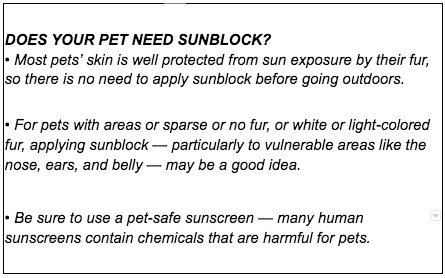
Need more advice on how to protect your pet and keep them healthy all year long? Read our Blog or Contact Us.
An Uptick of Tick-Borne Disease in NYC
Summer is a wonderful time to get outdoors and spend time walking, hiking, and playing with your dog (or cat!). But the ever-present worry of tick-borne disease can put a damper on your adventures. Just how big is the risk for our pets to catch a tick-borne disease in New York City? Well, as you would expect, the risk for city dwellers and their pets is predominantly associated with travel outside of the city — upstate, Long Island, and surrounding states.
But that doesn’t mean there’s no risk of your pet picking up a tick in the city. Local parks are home to pervasive, endemic tick populations with the potential to carry disease — especially in Staten Island and the Bronx, where the parks are connected to wooded areas with a native deer population.
“Tick Season” and a Rising Risk
Ticks (and fleas) thrive in warmer, more humid weather, which is why we’ve all traditionally considered spring and summer to be “tick season.” But the truth is, ticks can be active at any time of the year if temperatures rise above freezing. With changing climate patterns that have led to shorter winters and an overall warming of temperatures, it is likely that “tick season” will continue to grow longer and more severe.
And this rising risk is compounded by the fact that a warming climate is causing native tick habitats to evolve and expand, bringing new species of ticks to NYC and the surrounding areas, along with the different varieties of tick-borne diseases that they carry. Indeed, rates of tick-borne disease have been trending upward in both humans and their pets in the city for decades.
At All Creatures, the most common tick-borne disease we detect in our patients is Lyme disease (caused by the black-legged tick, or as it’s more commonly known, deer tick), followed by ehrlichiosis and anaplasmosis. We typically do this using an in-house SNAP 4DX blood test, which screens for all of these diseases, as well as heartworm disease. While an alarming one in ten of these tests comes back positive, the SNAP test only checks for antibodies, which indicate exposure to the disease, but not active illness. So, if a pet who is acting well with no symptoms tests positive, this most often means they have successfully dealt with it without any help from us!
For pets who do develop symptoms — which can include lethargy; stiff, painful joints; loss of appetite; and fever — treatment is typically a course of antibiotics for several weeks. (In some cases, we may also recommend a course of antibiotics for non-symptomatic pets.) And the good news is that most pets respond very well — especially if the disease is detected and treated promptly.
Prevention Is the Best Game Plan
Ticks prefer to live in shady, moist areas in the grass or shrubs near ground level, where they can most effectively find and latch onto small mammals or birds — precisely the kind of territory where our pets love to play and explore. So, prevention is the key to protecting your pet against tick-borne disease.
We strongly recommend that all our clients who spend any time outdoors with their pet use one of the many safe and reliable oral tick-preventive products that are widely available, such as Nexgard or Simparica, or topical products such as K9 Advantix or the Seresto Collar. For some dogs, we may also recommend the additional protection that can be provided by the Lyme vaccination.
Most importantly, inspect your pet (and yourself) promptly upon returning from any outdoor activities where ticks might be present. Be thorough — deer ticks are quite small, only about the size of a poppy seed. Typically, it takes hours or even days for a tick to transfer disease to its host — so the quicker you remove the tick, the less likely the risk of transmission!
The Most Common Ticks Found on NYC Dogs
What to Do if You Find a Tick on Your Pet
If you do find a tick that has already attached itself to your pet, you should remove it immediately using clean, pointed-tip tweezers. (See here for proper technique and tick disposal.) We recommend waiting 60 to 90 days after the tick bite before bringing your pet into the practice for a SNAP 4DX test, because it takes at least that much time for enough antibodies to be present in the blood to be detected.
And, with all of this in mind, don’t forget to enjoy yourself and have fun when you are outdoors with your furry friends!
Learn how to protect your dog from ticks and other parasites by contacting our hospital about our pet wellness plans.
All Creatures Veterinary Hospital’s Top 5 Blogs of 2020!

While 2020 had its ups and downs for New Yorkers, the pets of Brooklyn and beyond had a banner year! With so many home during the pandemic’s lockdown and stay-at-home orders, pets of all shapes and sizes reveled in having their peoples home and hanging out.
Pet owners seem to have enjoyed this trend, too. Not only have there been plenty of laughs and snuggles with our fur-friends, but an increased opportunity to get to know our pets, their behaviors, and their health better, too.
We are grateful that so many of you turned to All Creatures Veterinary Hospital’s pet blog for some insight into your pet’s needs and quirks, and hope you enjoy a glimpse of our top 5 most-read pet blogs this year!
Continue…The Big Reveal: All Creatures Veterinary Hospital’s Top 5 Pet Care Blogs of 2019

We all work hard throughout the year. Sure, we take summer vacations, or a few long weekends from time to time. But at the end of every calendar year it’s downright gratifying to look back at what we accomplished.
We feel very fortunate to be able to positively impact the health of the animals in our community. Part of our reflection includes a nod to our pet care blogs that proved to be the most interesting and relevant. With every click, scroll and share, our dedicated readers show they truly care about their pets, and with our mission of promoting animal welfare, we are inextricably linked.
Continue…Veterinary Hospital Lobby Safety & Etiquette
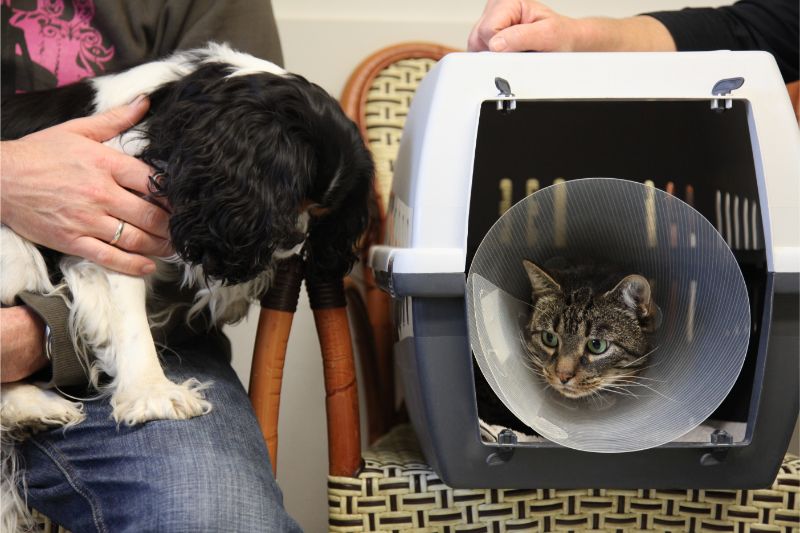
Whether it’s for a routine wellness exam, acupuncture, or emergency, we value the time and effort it takes to bring a pet in (and we know it’s not always easy!). As such, we do our best to limit wait times in our lobby and exam rooms, but sometimes pets and their people have a few moments to visit with others, explore the lobby, and visit with our friendly staff.
Veterinary hospital lobby safety is important to us at All Creatures Veterinary Hospital of Brooklyn, and we hope that the following tips can make your next visit as enjoyable as possible.
Continue…All Creatures Veterinary Hospital’s Top 5 Pet Care Blogs of 2018

2018 certainly had its ups and downs, but at All Creatures Veterinary Hospital of Brooklyn, we couldn’t be happier with the past 365 days. It has been a pleasure to serve our wonderful Brooklyn pet community, and each day has given us a chance to grow and give back to each of you.
Speaking of growing, we are thrilled that so many of you are reading our monthly pet care blogs. Writing and publishing the blog has been a privilege and we hope that it’s given you timely, interesting and relevant information about how to keep your pet their healthiest.
With that in mind, we looked at which blogs you found most engaging, and we’ve compiled All Creatures Veterinary Hospital of Brooklyn’s top 5 pet care blogs of 2018 here for your reading pleasure. Enjoy!
-
“ The level of understanding from the surgeon I spoke with was greatly appreciated. Especially during a tough time. ”
-
“ The best veterinarian hospital for my fur baby. ”
-
“ Always a great and informative visit. ”
-
“ The staff at All Creatures is really kind and attentive to the needs of my little Rogelio. I’ve seen Dr. Onderdonk various times and she is the absoute best. It’s evident that she genuinely cares about the well being and progression of Rogelio! ”
-
“ I like that Doctor Morgan is Frankie and Jack's vet and feeling like she is invested in the well being of our cats. She is also conscious of our pocketbook too. The vet tech's are always warm, friendly and are so good with my cats. ”
-
“ I feel grateful every day that there is a veterinary clinic this good in my neighborhood! They have compassion for animals, and also seem to really enjoy them--it is not just their job--they take an interest. The staff and vets are always helpful. ”
-
“ A great experience with a caring vet, a clean office, and a kind staff. ”
-
“ All staff was professional and pleasant. Really nice experience! ”
-
“ Best care for Paulie I have ever encountered... I travel from Manhattan (where there are plenty of vets... as a matter of fact there is one across the street from me...) and I still go to Brooklyn to see Dr. Morgan. I wouldn't go anywhere else!! ”
-
“ We love Dr Morgan. She takes the time to listen and formulate her opinion and a proper way forward with your pet. You really feel that you are benefitting from a smart doctor and the years of education she absorbed. Thanks for all the concern & care. ”
-
“ Every vet and nurse at All Creatures has been so attentive and loving to my cats, and to me, through good times and bad. I would happily recommend them to all my pet owning friends. ”
-
“ Always great attitude, assistance, and helpfulness with staff regarding questions. All staff loves dogs and it shows when Gus is around. Best vet I've had in NYC. So glad I was referred by a friend. ”
-
“ We are so happy we found you! ”
-
“ The doctors and office staff are very nice and pleasant. My 2 dogs also like their vets and I am satisfied with the care they've received. ”
-
“ This place is great, everyone on staff is very helpful and always treat us with great care. ”
-
“ Everyone was friendly, I never felt like I was being "sold" anything and the staff obviously care so much about the well being of my dog. ”
-
“ We were very nervous about neutering our 2 yr old mini schnauzer but knew it was the right thing to do. The staff was so friendly and professional and eased our fears, even from the 1st call. They treated Chico Jr like family! ”
-
“ Dr Erica Morgan is professional, knowledgeable and caring. The atmosphere in the office is loving. Everyone is more than helpful and understanding. ”
-
“ literally the best! everyone is so nice and kind and explains everything to us! ”
-
“ Dr. Morgan made Pepper's first vet visit a breeze! She took the time to answer all of my questions. She seemed to genuinely love caring for animals - I immediately felt that I could trust her 100%. I'm so happy I found her! ”
-
“ Dr. Morgan really took a lot of time to talk with us about starting our pup on meds - something I was stressed and unsure about. She was as compassionate as she was intelligent and in just one visit I have come to trust her very much. ”
-
“ prompt, courteous, professional service...what else could a pet ask for? ”
-
“ Because from the front desk to the back room, you're all great! ”
-
“ Everyone was kind and helpful. My dog can be very skittish with new people but the staff was very patient and understanding. ”
-
“ 1st visit - was impressed by courtesy, info and care provided. ”
-
“ Thanks for the quick and friendly service! I always feel satisfied when I leave the vet's office and find the doctor and staff to be extremely warm and welcoming. ”
-
“ All Creatures is run by extremely friendly, passionate and knowledgable people. Every time we visit, I feel lucky to have found doctors and staff that take great care of my oh-very-sensitive pooch. ”
-
“ All creatures did an incredible job with my little girl. They did everything possible to help her stay alive even though her journey came to an end the doctors and staff still managed to help me make arrangements and for that I'm very appreciative. ”
-
“ I've never received such compassionate service from a vet's office. Everyone I have met has been genuinely pleasant speak to and very helpful. I plan on bringing the rest of my furry family here. ”
-
“ I have recommended you several times and left fliers/cards in my building--love the place. Even Henry doesn't mind (too much). Kind friendly compassionate reasonably priced--what more is there to ask for. Good hours too. ”
-
“ Everyone there was very kind, patient, and understanding. They weren't rough with my cat, and if my cat absolutely didn't want something done, the vets respected it. I felt very comfortable with all the employees I met that day. ”
-
“ I had a great experience here! Everyone was friendly and helpful, I didn't have to wait, it was clean, and I felt like my kitten was in great hands being treated here. ”
-
“ I am so pleased that I chose Dr. Morgan to treat my dog's arthritis. Dr. Morgan has a gentle, no-nonsense approach that I (and my dog) truly appreciate. I recommend All Creatures Vet Hospital to anyone seeking quality care for their beloved pet. ”
-
“ We brought our puppy here and she was seen so quickly. Dr. Morgan took the time to make our puppy feel comfortable before examining her. And took the time to explain everything to us as new puppy parents. Overall great experience. ”
-
“ I love All Creatures Vet Hospital. Staff is curteous and you feel welcome. You can rest assure they care about the animals they provide services to. They even gave us a wellness checkup call. This is our Vet from now on. Thank you All Creatures Vet. ”
-
“ My dogs are new patients and have received good care on short/urgent timing! ”
-
“ Everyone, from the receptionist to the veterinarian, was very nice, and the veterinarian was extremely patient with us and answered all of our questions. ”
-
“ I really like everyone here and thank you for the great care so far with Mr. Fluffy and Paikea. ”
-
“ Welcoming, knowledgeable and very pleasantly concerned staff! ”
-
“ You continue to treat Memphis as if he were family. We trust he is in good hands which is the most important thing to us in terms of care for our little man. ”
-
“ Our 3 year search for a fantastic vet ended when you opened All Creatures! Gritz was handled roughly at his previous vet and it made an impact. Now he tries to go in every time we pass your door. ”
-
“ The office was a very friendly and clean atmosphere. The doctor was very gentle with my pets and also answered all my concerns. ”
-
“ Our visit was truly an overall perfect experience. ”
-
“ So grateful to have found All Creatures Vet. I was struggling to find a vet that was affordable AND trustworthy. I've been looking and trying vets. Thank you All Creatures for taking good care of me and my cat. ”
-
“ Staff was friendly and knowledgeable and took the time to follow up post appointment. ”
-
“ Everyone I interacted at in this office was friendly, professional and clearly care about the animals being brought in. The follow up calls to check on George amazing and unexpected. So, what more could a pet owner ask for?? ”
-
“ I enjoyed my experience and the staff was very helpful and friendly. ”
-
“ Everyone was extremely helpful and thorough! ”
-
“ Over the past 45 years I have lived with lots of cats and dogs, and I have visited MANY veterinarians. All Creatures is the best. The beautiful facility, the friendly and helpful staff, and the dedicated and nurturing doctors are all outstanding!! ”
-
“ Friendly, professional staff. Answered all my questions. Gave clear directions on how to care for my cat after surgery. ”
-
“ I have been to at least 8 different vet practices, and this is BY FAR the best. The facility, the care, everything is superlative! ”
-
“ Lovely and very caring staff who took their time to explain everything to me and offer different treatment options. ”
-
“ Clean, efficient, listened and very helpful on getting my dog fit for international travel! ”
-
“ I loved our visit to All Creatures because everyone was warm and friendly. It was clean and inviting. I was recommended by a friend who spoke very highly of Erica Morgan, so I wanted to try it out. She was professional, compassionate and smart! ”
-
“ You guys are simply the best! ”
-
“ Everyone was kind, informative and thorough with each step of the experience. You could tell Bast was well cared for when he returned in great shape and great spirits after surgery. ”
-
“ Both Leo and I love Dr. Morgan. I feel that my drama queen beagle is in good hands. She cares about Leo and her history and will do the right tests to understand what is wrong. I also appreciate the blend of traditional and holistic treatment. ”
-
“ I had a great first experience at your clinic. The vet did a great job of making my anxious cat feel comfortable at her appointment and she was well cared for. Thank you! ”
-
“ Convenient, ease in getting quick appointment. Clean, friendly, welcoming environment. Attentive and knowledgeable to all concerns. ”
-
“ Dr. Morgan and her staff are a breath of fresh air in the local field of veterinary care. The service they provide is highly knowledgeable, thorough, personable and trustworthy. I will be recommending All Creatures to my friends and clients! ”
-
“ Fast and friendly, lots of good advice and attention to detail. ”
-
“ As a matter of course, I don't tend to recommend businesses to friends, but I am telling everyone about you guys because you are the best and I love animals enough to tell everyone so! ”
-
“ Above and beyond pet care! They sent someone with a carrier to help us get Rambo to his appointment. Everyone was really kind and really knowledgeable and seemed to really care! Best possible first vet experience for us and Rambo! ”
-
“ This group of passionate & dedicated professionals is exactly what we were looking for. They made us feel welcomed and valued but most importantly they knew how to handle & care for our skittish, senior, feline son. They never made us feel rushed. ”
-
“ We are so lucky we found you guys! Dr. Morgan and and the entire staff have been so patient with us as new puppy owners, answering all our questions and beyond. The communication and follow up has been great! ”
-
“ Personal and professional service with thoughtful and planned care for my dog. ”

